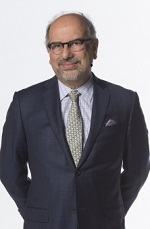 |
| Yale's Barry Nalebuff |
The market for next-gen hepatitis C drugs is already dominated by Gilead ($GILD) and AbbVie ($ABBV), who boast exclusive contracts with the country's largest pharmacy benefits managers and health insurers. But Merck & Co. ($MRK) is prepping its own contender, which could launch next year. What should it do to win a piece of the pie?
According to Yale Professor Barry Nalebuff, game theory offers an idea, Bernstein's Geoffrey Porges wrote in a recent note to investors. The way Nalebuff sees it, Merck could employ a so-called "Judo strategy"--simply put, using the size and strength of its opponents against them.
"If you're small, a large player doesn't want to come down and swat you because it hurts them in the process. And so, the trick is to find a way to commit to being small," Nalebuff said. "Is there some niche market that Merck can approach and thereby not make it worthwhile for Gilead to come after them?"
With new-age pill Sovaldi and the combo pill, Harvoni, that followed less than a year after it, Gilead certainly already has the "size and strength" thing down pat. In the first quarter alone, Harvoni raked in $3.58 billion, with Sovaldi adding another $972 million.
But Gilead has its own problems, and game theory could help it out with those, too, Nalebuff figures. Its drugs bear lofty pricetags, but the bigger issue is the high volume of patients who want access to them. Multiply those together, and they're breaking the bank.
To Nalebuff, the thing to do is "protect insurers against a radical rise" in the quantity of patients taking the drugs. His idea? Rather than paying as each patient is diagnosed and treated--and stalling till patients get really sick, to control costs--insurers could pay a flat fee per member.
"What I'd like to see them do is make the following proposal to insurers: Roughly speaking, your incident rate is 1%," Nalebuff said, adding that treatment for each hep C patient costs insurers roughly $50,000. "One percent of $50,000 is $500 per person. I don't expect them to get everybody, so if I got 60%, that'd be $300 per person."
By that math, Gilead should ask for $30 a year per enrollee and guarantee it'll treat everyone over 10 years. That means no surprises for insurers, who can get started right away treating everyone and not worrying about cost.
And for the California biotech? "What you'll have is … a certain revenue stream, no need to be worried about what the disruption in the market will be. You can predict you're going to get $30 a year per plan member for the next 10 years," he said.
- read a summary from Barron's
Special Reports: Top 15 pharma companies by 2014 revenue - Merck - AbbVie - Gilead | Biopharma posts a chart-topping 41 new drug approvals in 2014 - Harvoni - Viekira Pak